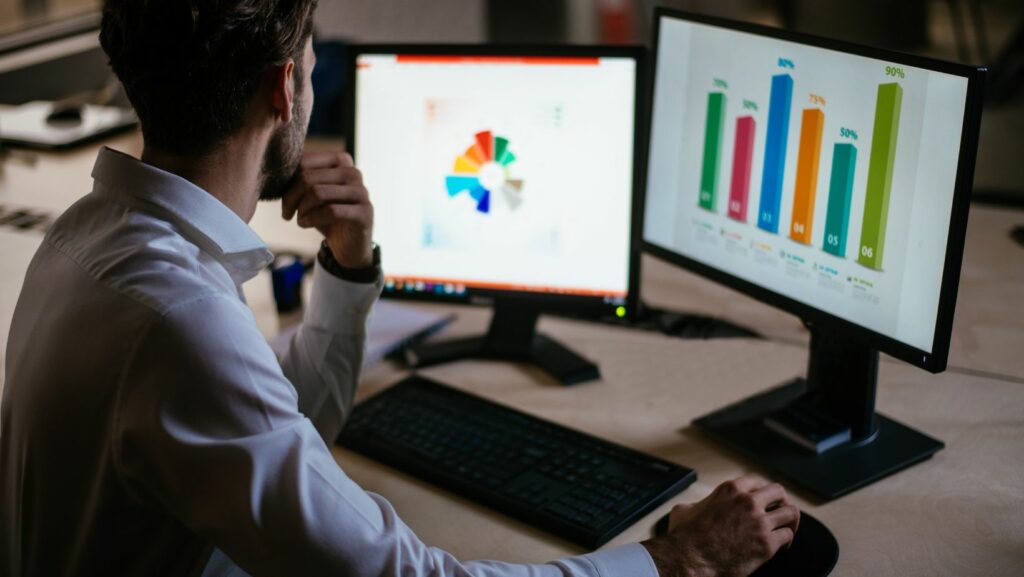In the ever-evolving landscape of business, staying ahead of market research trends is not just beneficial—it’s essential. As companies strive to gain a competitive edge, understanding these trends can be the key to unlocking success.
From AI-powered analytics to the rise of qualitative data, the market research industry is undergoing significant transformations. These changes are reshaping the way businesses gather, analyze, and interpret consumer behavior.
This article delves into the latest trends in the market research industry, offering insights into the innovative strategies that are setting the pace for tomorrow’s market research. Stay tuned to discover how these trends could influence your business’s future strategies.
Recent Trends in The Market Research Industry
 Artificial Intelligence’s (AI) role in market research is gaining prominence, transforming industry practices. This evolution arises from AI’s ability to streamline data collection, and automate analysis, offering real-time insights.
Artificial Intelligence’s (AI) role in market research is gaining prominence, transforming industry practices. This evolution arises from AI’s ability to streamline data collection, and automate analysis, offering real-time insights.
AI’s ability to collect data supersedes conventional methods in both reach and efficiency. Various AI tools, such as natural language processing and chatbots, gather information from potential consumers across multiple channels. For instance, AI uses social media trending topics, understands consumer sentiment, and deciphers behavioural patterns. Eliminating cumbersome manual surveys, AI-powered platforms interpret raw data and convert it into analyzable information, heightening the accuracy and speed of data collection.
Structured and unstructured data alike undergo rapid analysis with AI-driven market research tools. Machine learning algorithms sift through multitudes of data, discarding irrelevant information, and providing real-time insights. As a case in point, AI tools classify and segment client feedback, mapping consumer behaviour trends and predicting sales patterns. This automated analysis saves considerable time, allowing businesses to make prompt, informed decisions. In fact, businesses that employ automated AI analysis have seen substantial improvement in their decision-making strategies. With instant insights, companies are able to adapt their plans to emerging market trends, increasing their ability to stay competitive in the rapidly changing business landscape.
Influence of Social Media Analytics
 Social media analytics continues to reshape the landscape of market research, building upon the transformative impact established by Artificial Intelligence (AI). This tool aids businesses not only in gathering extensive data but also in tracing emergent consumer trends and patterns within the digital sphere.
Social media analytics continues to reshape the landscape of market research, building upon the transformative impact established by Artificial Intelligence (AI). This tool aids businesses not only in gathering extensive data but also in tracing emergent consumer trends and patterns within the digital sphere.
Social media analytics excels in extracting valuable behavioral insights from the deluge of data generated on social media platforms. Increased user engagement with business profiles, likes, comments, and shares act as key performance indicators. For instance, a sudden surge in the ‘likes’ or ‘shares’ of a product post can indicate a rise in its popularity. Similarly, comments often give insights into consumer sentiments about the product. As such, businesses find it beneficial to monitor these parameters closely to make informed decisions.
Impact on Marketing Strategies
Businesses leverage insights from social media analytics to fine-tune their marketing strategies. Informed by this data, businesses create targeted ads, personalized campaigns, and strategic posts. For example, businesses may identify popular posting times during which most users are active, thereby reaching a broader audience. Furthermore, they can identify their target audience’s key influencers and design influencer-based promotional campaigns. These practices exemplify the way social media analytics bolsters overall marketing strategies.
Advancements in Predictive Analytics
 Predictive analytics haven’t just caught the industry’s attention, they’ve become integral tools in the progression of market research. By combining traditional statistical techniques with AI-driven algorithms, predictive analytics are apt to extract insights from complex data sets, improving forecasts and decision processes significantly.
Predictive analytics haven’t just caught the industry’s attention, they’ve become integral tools in the progression of market research. By combining traditional statistical techniques with AI-driven algorithms, predictive analytics are apt to extract insights from complex data sets, improving forecasts and decision processes significantly.
In enhancing forecast accuracy, Predictive analytics employs a range of statistical techniques. It synthesizes historical data, current trends, and future estimates for a more reliable forecast. By incorporating factors such as seasonal patterns, economic indicators, and market dynamics, these methods present a comprehensive, data-driven perspective. An instance of its application is in the retail sector, where predictive analytics helps forecast inventory needs and consumer purchasing behavior more accurately.
Predictive analytics plays a just-as-important role in bettering decision-making processes. It utilizes a data-based strategy, pinpointing potential risks and opportunities before they come into existence.



